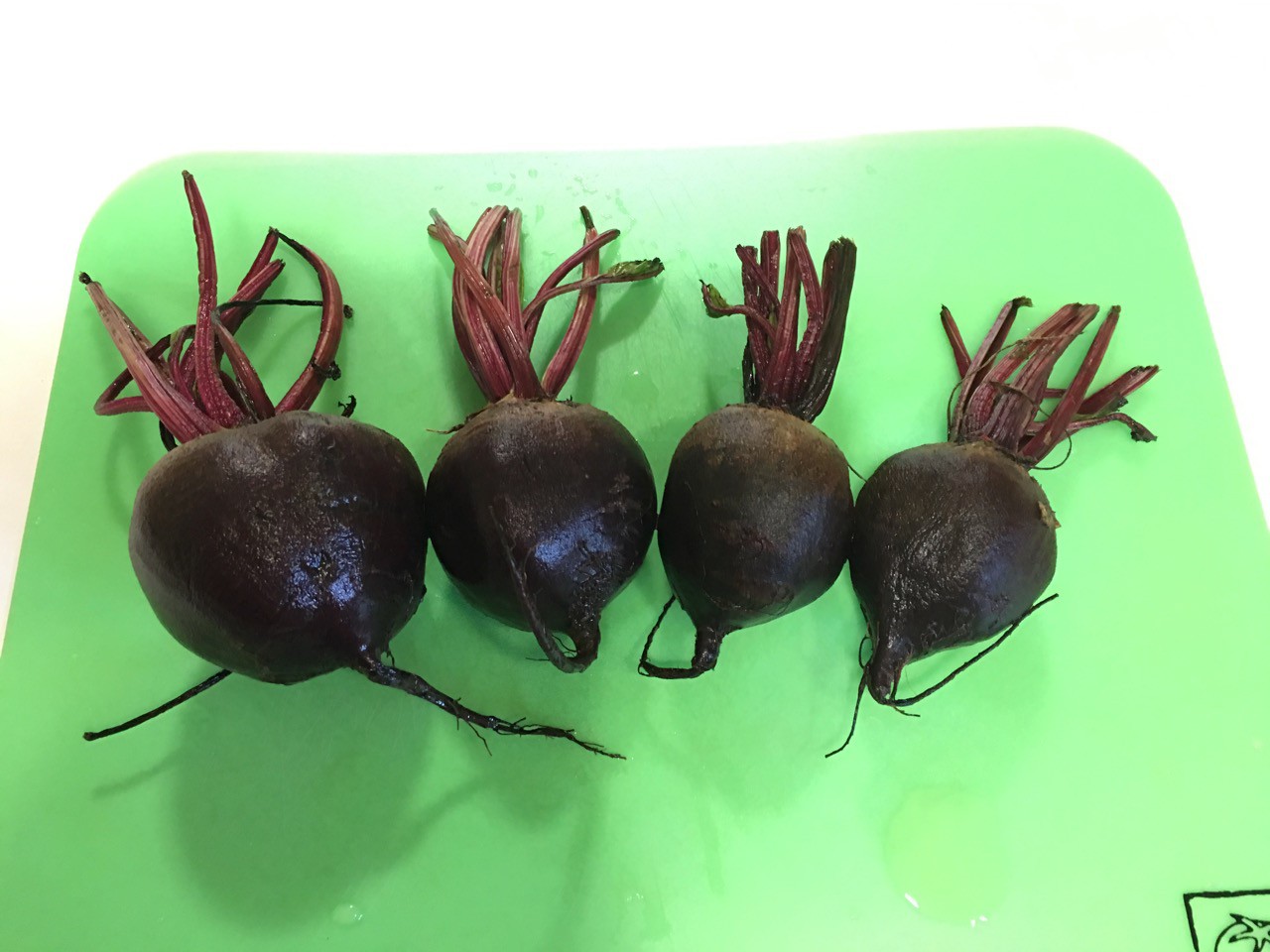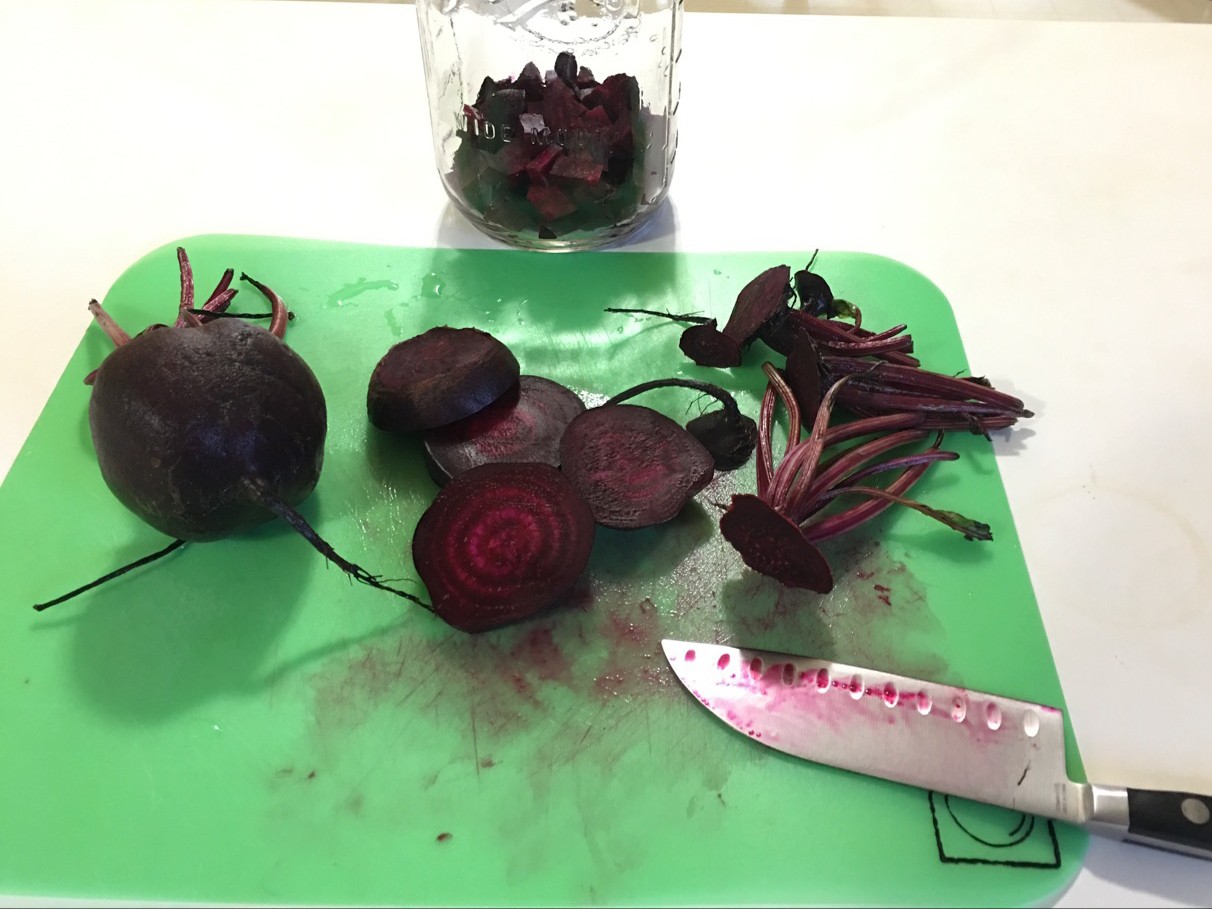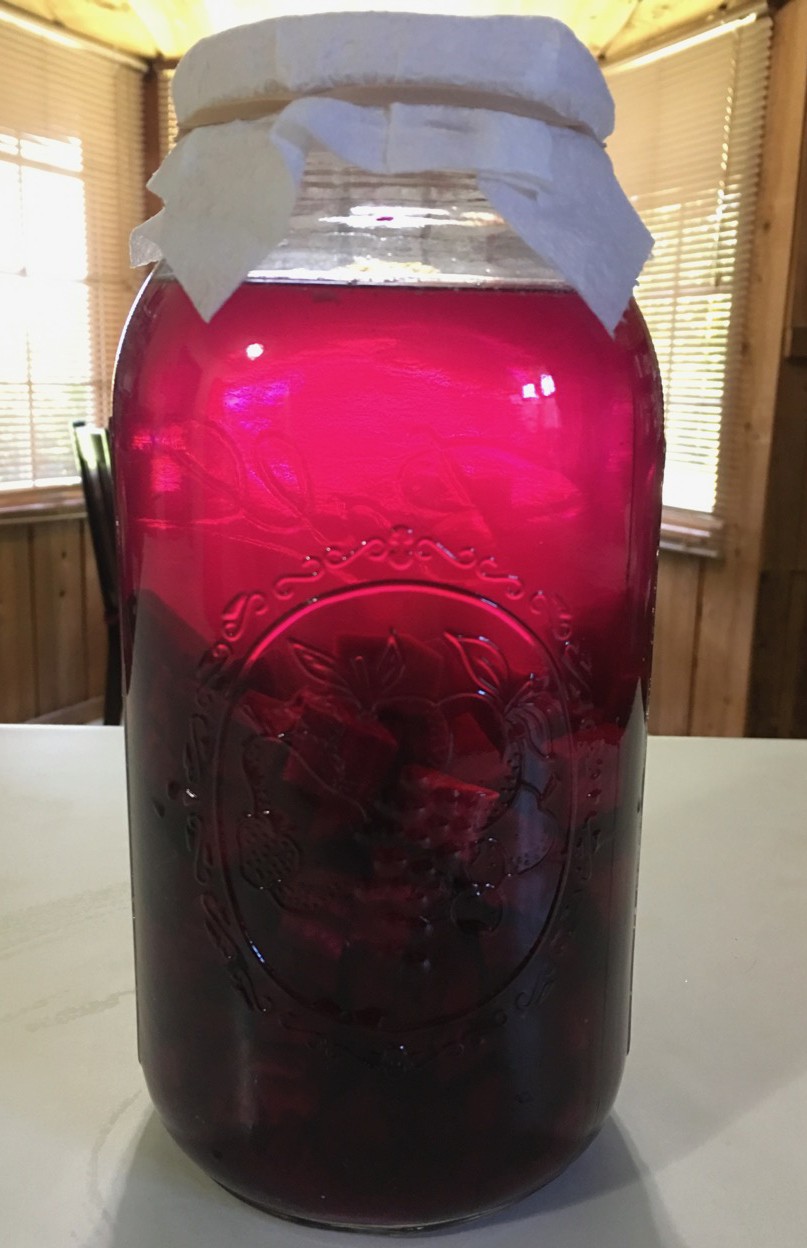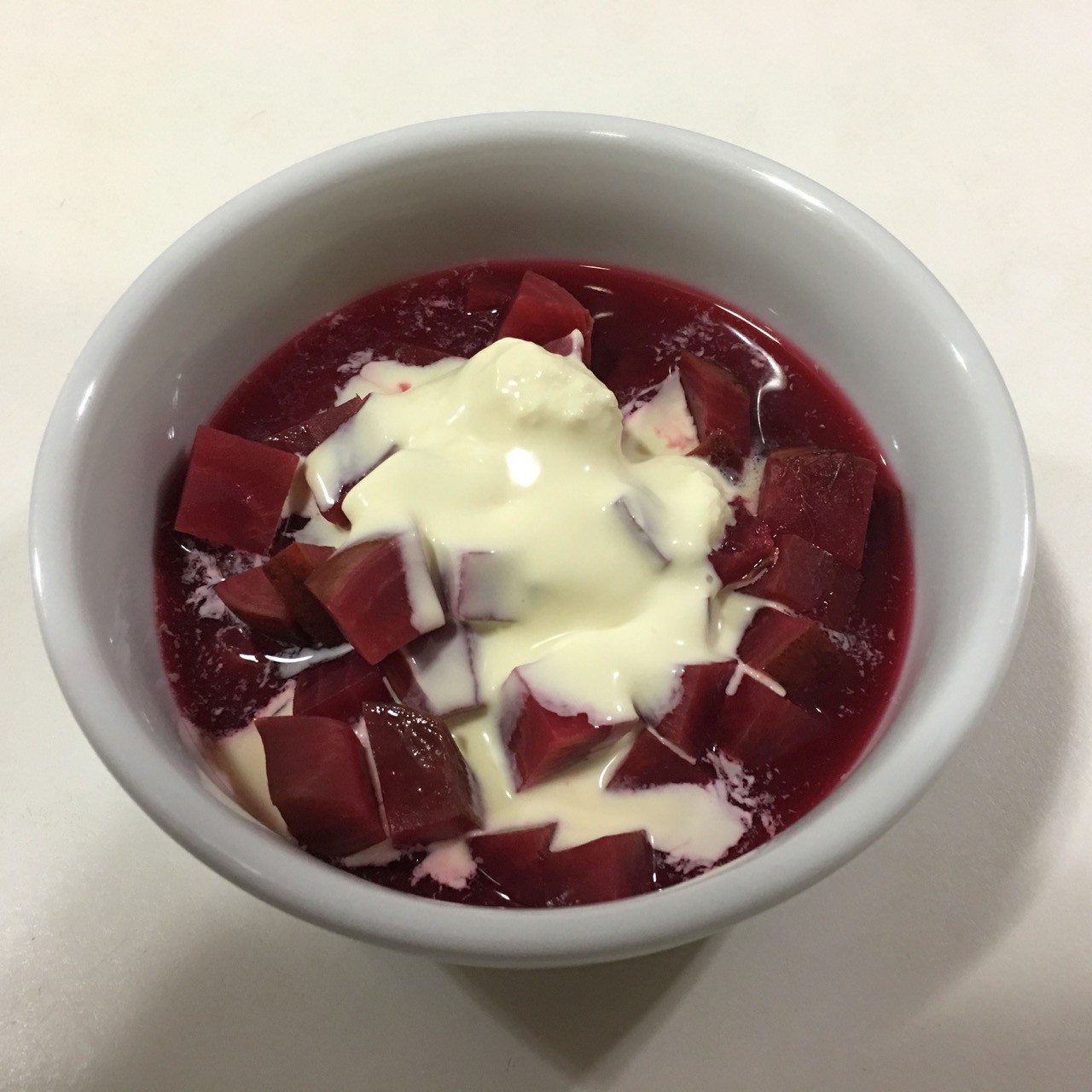
I’m usually not a big fan of purple beets, but they’re the stars of a wonderful lacto-fermented beverage called Beet Kvass…a probiotic purple powerhouse!
So you say fermented beet doesn’t sound that appealing…but wait. This beverage is earthy, slightly sour, lightly salty, and sweet. Drinking it feels like ingesting the “blood of the earth”, as Jenny McGruther of Nourished Kitchen describes it: nourishing, rich, and incredibly revitalizing. It’s valued as a liver cleanser and has strong antioxidant properties, too.
Beet kvass is easy to make, and beets will keep in your refrigerator crisper for longer than you’d think. Even slightly spongy beets can be used to make the drink – but crunchy, fresh, beets are best.
Here’s how I make mine:
- 3-4 medium beets
- 1 tablespoon sea salt
- 1/4 cup whey (I use the whey I pour off my homemade milk kefir)
Instructions
- Chop the beets into roughly 1″ chunks and place in a half gallon glass jar
- Add the salt, whey, and enough dechlorinated water to fill the jar
- Stir the ingredients until the salt has dissolved
- Cover with a breathable lid (I use a clean paper towel secured with a rubber band) and allow to ferment for 3-4 days depending on the temperature inside your house – if it’s warm, it may be ready more quickly; if cold, it may take longer.
- When fermentation is complete, strain off the liquid, bottle, and refrigerate
- To make a second batch with the beets, simply add some of the finished kvass back to the beets in the jar, top up with water again, and let it work its magic for 3-4 more days. After the second batch, the beets are “spent” and should not be reused for kvass.


With the warm weather, kahm yeast (a white film) can appear on the top of my jars of fermenting kvass. If you see it on your fermenting kvass, don’t toss your batch out – just skim it off so it doesn’t impart an “off” flavor or odor (though I’ve never had it do either). This article at phickle.com has helpful photos and descriptions to help you determine if you’re seeing mold (a problem) or kahm yeast (not a problem): The Wrath of Kahm.

Wondering what to do with those spent beets..? I like to use them to make borscht – just add them to a slow cooker with chopped cabbage, a can of diced tomatoes, beef stew meat or a beefy bone, some tomato paste, a splash of raw vinegar, and salt and pepper. You may add dill, also, if you desire. I just let the borscht cook all day on low, and it makes a hearty meal with a dollop of sour cream (or a splash of cream) on top and a piece of crusty bread on the side. Make it vegetarian by omitting the meat and dairy free by skipping the sour cream and you’ll still have a very tasty soup…I think fermented beets are even better than fresh ones in borscht!

Tip: beets stain…badly. Remove any spills from your counters (if susceptible to staining, like mine are) right away.
Are you making beet kvass? Did it turn you on to beets? Tell us about it in the comments!

Comments are closed.